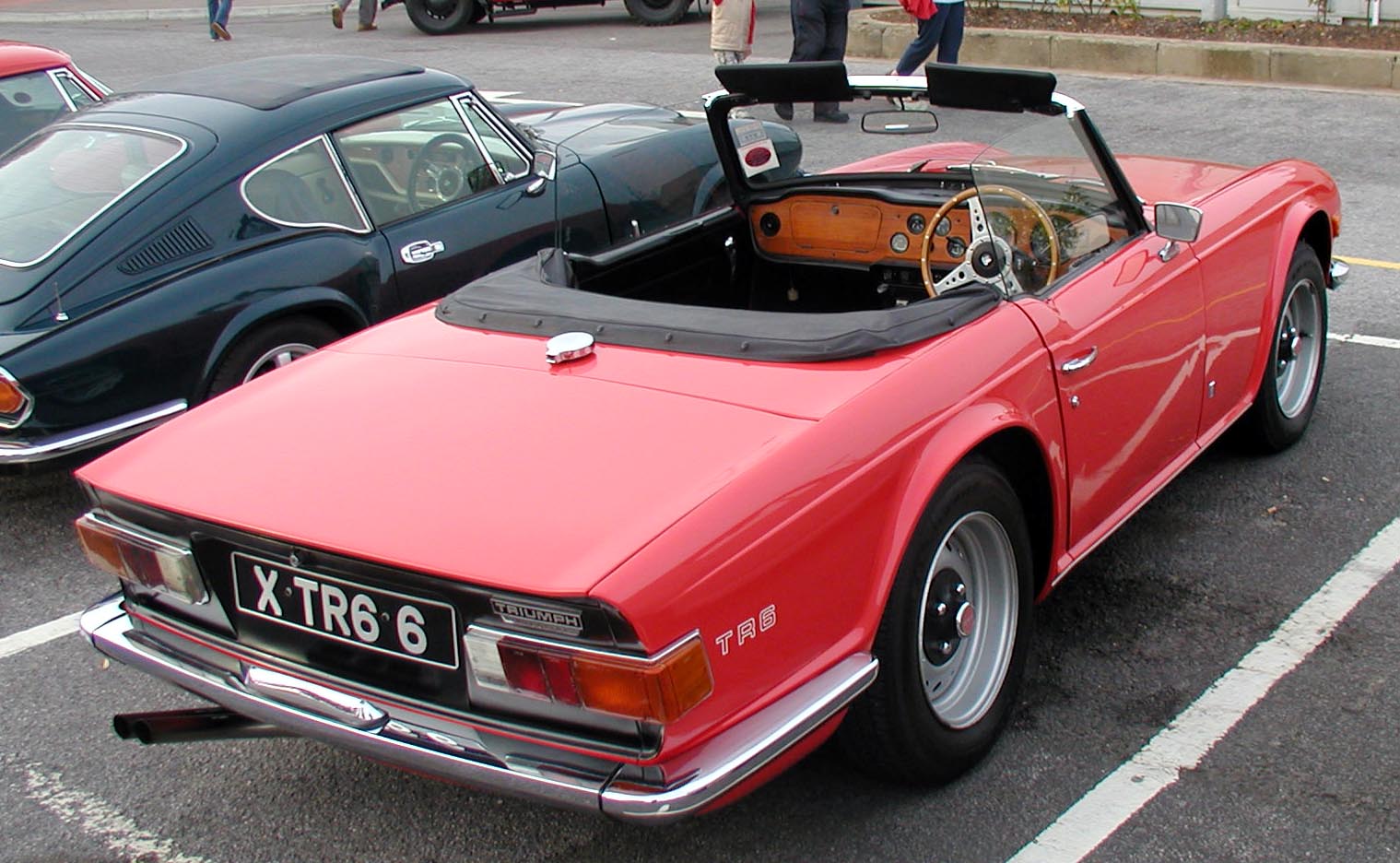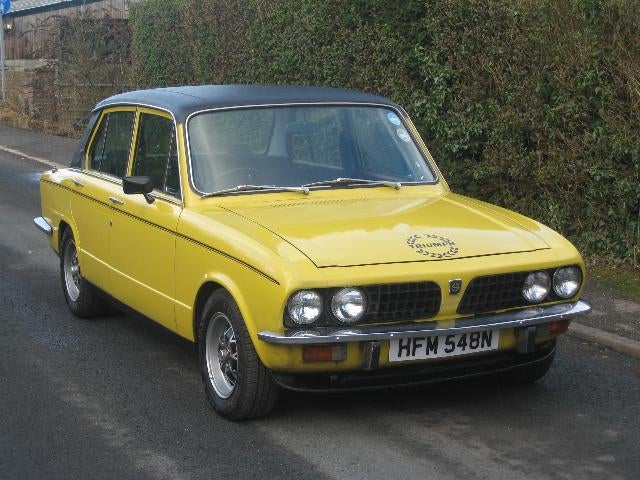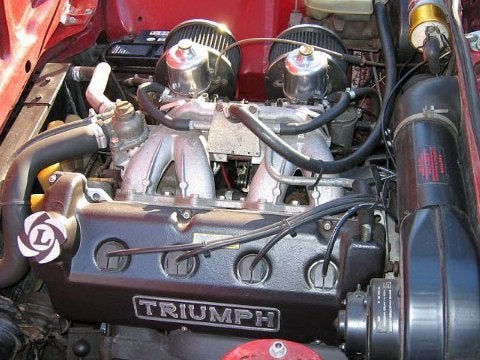 "Cé hé sin" (michael-m-mouse)
"Cé hé sin" (michael-m-mouse)
01/30/2015 at 14:53 • Filed to: TR6
 1
1
 13
13
 "Cé hé sin" (michael-m-mouse)
"Cé hé sin" (michael-m-mouse)
01/30/2015 at 14:53 • Filed to: TR6 |  1 1
|  13 13 |

Here we see a TR6, made from 1968 to 1976. It was very much an "export" car as only 8,370 of the 94,619 made were sold in the UK. Most of the rest went to the US.
Thing is though, out of those 8,370 we find !!!error: Indecipherable SUB-paragraph formatting!!! that as at the end of Q3 of 2014 3,323 were taxed for road use and a further 1,264 were declared to be off the road but not scrapped. We also see that the numbers are seasonal as cars are put on the road for the summer.
Overall then and ignoring imports some 4,587 out of those 8,370 are still in existence more than forty years on which is quite some figure for a car never intended as a collector's item to be laid down and treasured.
In comparison Triumph made something like 500,000 Acclaims and only a couple of hundred are left.
 SidewaysOnDirt still misses Bowie
> Cé hé sin
SidewaysOnDirt still misses Bowie
> Cé hé sin
01/30/2015 at 14:57 |
|
I see Triumphs show up to autocross all the time, usually on the back of a trailer. I don't think I've ever seen one complete a lap. I saw one TR6 lose a wheel and a Spitfire flip, but so far I have yet to see someone who arrives with a Triumph leave in anything other than defeat.
 RamblinRover Luxury-Yacht
> Cé hé sin
RamblinRover Luxury-Yacht
> Cé hé sin
01/30/2015 at 15:06 |
|
In my fairly small town in the US there are at least two, possibly three or more... Not that they spend that much time running, but they're about.
 twochevrons
> Cé hé sin
twochevrons
> Cé hé sin
01/30/2015 at 15:08 |
|
That's really quite a remarkable survival rate. When I moved to the US, I was amazed at how much more common (and how much cheaper) British roadsters were. Hell, I even have an MGA now!
I do wonder, though, how many of those TR6s are still running their original mechanical fuel injection. In NZ, it was often ditched for carbs because people didn't understand how to tune it. A real shame, in my opinion – when set up properly, it worked wonderfully, and those individual throttle bodies and braided high pressure fuel lines looked gorgeous.
 Cé hé sin
> RamblinRover Luxury-Yacht
Cé hé sin
> RamblinRover Luxury-Yacht
01/30/2015 at 15:10 |
|
Forty year old cars rarely spend much time on the road! For one thing their owners want to avoid anything resembling wet weather, because forty year old steel and water are not a happy combination.
 RamblinRover Luxury-Yacht
> Cé hé sin
RamblinRover Luxury-Yacht
> Cé hé sin
01/30/2015 at 15:13 |
|
All true, I can attest particularly in the case of the TR6 - both in my town that I've had contact with have some issues, one much more severe, and I've read a brit mag's buyer's guide for the TR6 from the 90s covering the many points of frailty to good old fashioned water. For both these, though, there are carburetor fiddlinesses and distributed mild grumbles of a mechanical nature like an MGB.
 Cé hé sin
> twochevrons
Cé hé sin
> twochevrons
01/30/2015 at 15:14 |
|
Statistically, very few survivors would have injection - they never used it in America which was their main market.
But yes, the prospect of maintaining fuel injection designed in the 1960s would daunt most....
 Cé hé sin
> RamblinRover Luxury-Yacht
Cé hé sin
> RamblinRover Luxury-Yacht
01/30/2015 at 15:17 |
|
To make life interesting, the ones not sold in America had fuel injection, not a common thing on a 1960s car...
 twochevrons
> Cé hé sin
twochevrons
> Cé hé sin
01/30/2015 at 15:20 |
|
My father had a 2.5PI saloon – the only reason that he was able to tune it was that he worked for a research laboratory had access to precision measuring equipment and fabrication facilities!
The Lucas PI system is one of those complex mechanical marvels that really shouldn't work at all, but does. Apparently, Maserati also used it, and it was successful in competition, too, but it's entirely unsurprising that it didn't catch on.
 Trevor Slattery, ACTOR
> Cé hé sin
Trevor Slattery, ACTOR
> Cé hé sin
01/30/2015 at 15:27 |
|
As a member of the DC/metro area Triumph club, I can tell you the reason a lot of them are around is because a fair amount of the people who owned them back in the day STILL own their cars, or their kids do.
Half the problems with the classic car clubs is age. All the younger cats want to play with their Japanese or Euro imports from more recent times. I don't think there is a member in my club under 40.
But TR6's are nice cars. They have to be taken care of and you gotta know what to look for. The two biggest things are frame rust where the trailing axles attach to the frame (all the cool looking negative camber you see on the back of some TR6's is because the trailing arms are about to pull out of the frame, not because the owner has the car "stanced") and the differential mounts. On the engine front, you always check for crankshaft endfloat. These engines have half moon thrustwashers that can fall out once worn. They fall out, the engine bearings eat themselves alive in short order. The symptom is clutch trouble. The clutch has problems engaging because when you step on the clutch pedal the crankshaft moves instead of the clutch mechanism. I have seen up to an inch of play on cars driven into the shop.
Other than that, they are straightforward. Electrical gremlins usually traced to bad grounds and rust. Good dependable cars and a hoot to drive. But I say that about all British cars.
 Cé hé sin
> Trevor Slattery, ACTOR
Cé hé sin
> Trevor Slattery, ACTOR
01/30/2015 at 15:33 |
|
That's the thing about classic cars isn't it? People buy the ones they remember from their childhood. I went to a show last summer and most of the classics were 1980s or 1990s. Cars from the 1950s or 1960s are nowadays worth very little unless they were rare and appreciated when they were new.
 Trevor Slattery, ACTOR
> Cé hé sin
Trevor Slattery, ACTOR
> Cé hé sin
01/30/2015 at 15:56 |
|
I honestly don't consider anything from the 80's or 90's to be a classic, but I am 46.
I honestly think the lesser known cars from the 50's and 60's and early 70's are the ones that will be appreciating the most in the near future because they were NOT maintained and as a result there are not a lot of them left.
 twochevrons
> Trevor Slattery, ACTOR
twochevrons
> Trevor Slattery, ACTOR
01/30/2015 at 16:05 |
|
My family's trusty 2500TC (four-door sedan with essentially the same engine as the US-spec TR6) was showing signs of excessive end float near the end of its life, but it was rust that killed it in the end.
I have a real soft spot for the Triumph six, though. Ours lasted for 330,000km and 38 years of everyday use, two novice drivers (me, and later my brother), and never missed a beat. We maintained it well, but even so, it was never pampered, and as far as I know, it never had anything more than the valve cover off. It's a lovely engine.
 Trevor Slattery, ACTOR
> twochevrons
Trevor Slattery, ACTOR
> twochevrons
01/30/2015 at 16:12 |
|
The endfloat thing is "easy" to fix if you are decent with engines. They sell them in oversize thicknesses to take care of the problem.
But I agree, design flaws notwithstanding they are good engines. But I am a Triumph man, so I am totally biased!

What I really want to do is import a Dolomite Sprint.

<<<<<